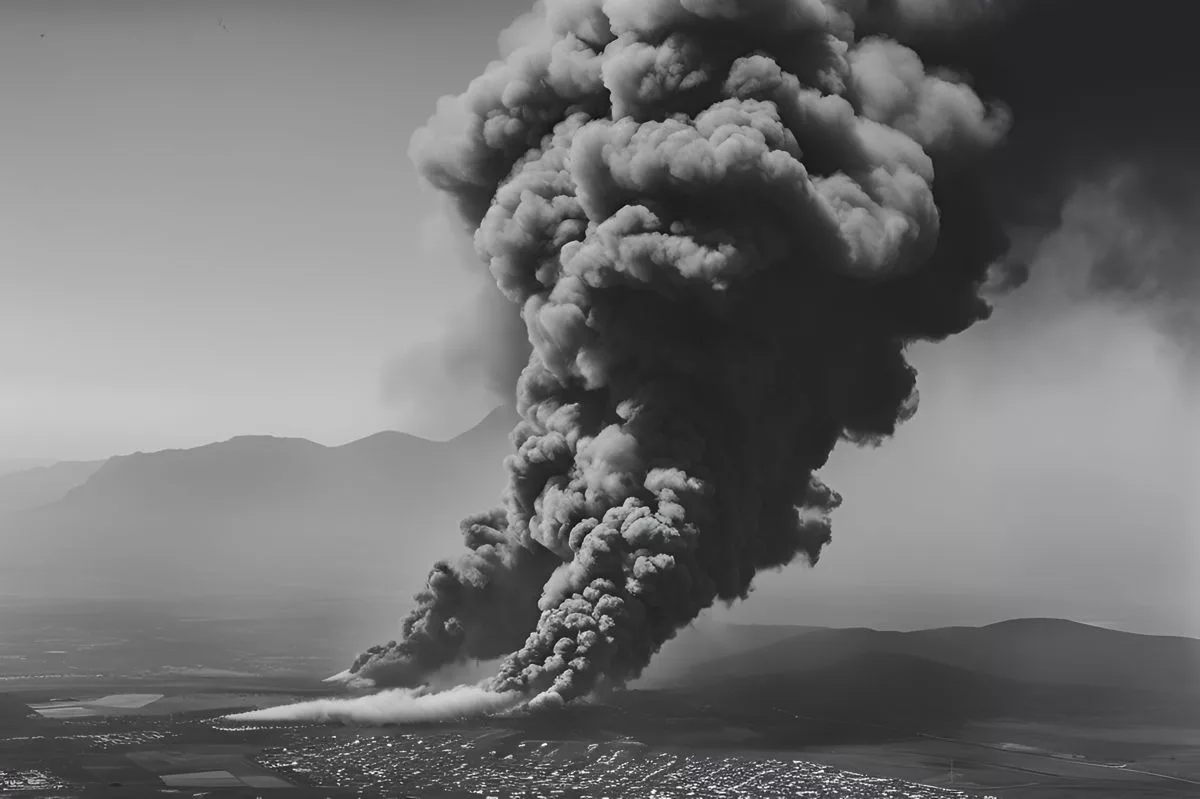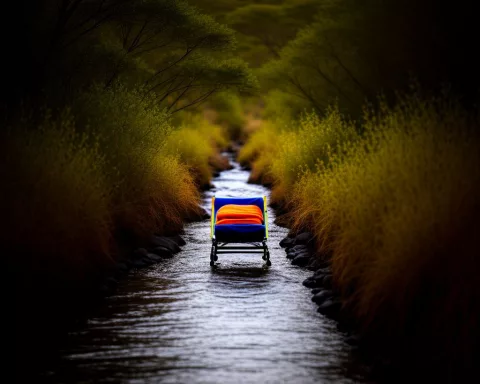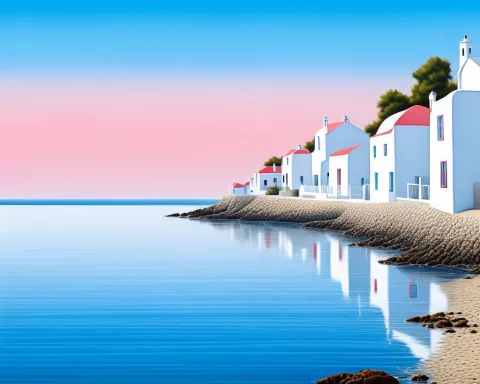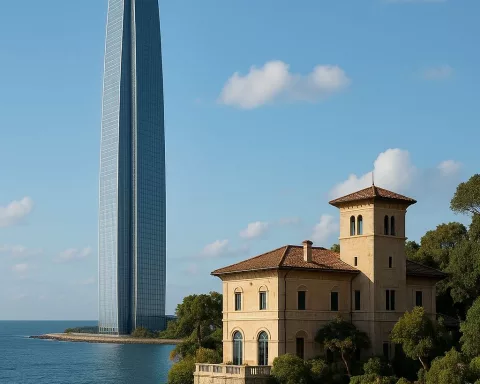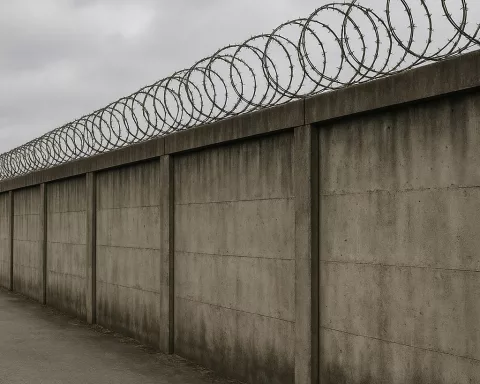Devastating wildfires in the Western Cape have displaced over 250 individuals and exposed the region’s susceptibility to nature’s whims. The wildfires have ravaged multiple areas, including Overstrand, Breede Valley, and Witzenberg, and firefighters have been working tirelessly to tackle the blazes. The fires serve as a reminder of nature’s formidable power, but also highlight the resilience and tenacity of the Western Cape’s residents.
A Waking Nightmare: Devastating Wildfires in the Western Cape. Over 250 individuals were abruptly displaced by the menacing figure of encroaching wildfires, casting them as unwilling nomads in their own land. The wildfires in the Western Cape exposed the region’s susceptibility to the whims of nature, underscoring the need for thorough emergency plans.
The Dawning Destruction
As dawn broke over the Western Cape, serenity was shattered by an unsettling sight. Over 250 individuals were abruptly displaced from their homely havens by the menacing figure of encroaching wildfires, casting them as unwilling nomads in their own land. The South African Weather Service (SAWS) declared a Yellow-level two alert on Monday, signaling potential damage due to severe winds, coastal storms, and thunderstorms in the central and northern zones of the Western Cape, jeopardizing the well-being of this idyllic stretch.
Code Red: Overstrand Municipality Battles Mother Nature
The last but one day of January saw Overstrand Municipality wrestling with the untamed fury of nature, leading to the proclamation of a ‘Code Red’. Inhabitants of Pringle Bay found themselves ensnared in a whirlwind of uncertainty as wildfires blazed uncontrollably in Hangklip. Yet, once the fiery embers subsided and the smoke lifted, they were allowed to return to their residences.
Overstrand Mayor, Dr. Annelie Rabie, provides a lucid account of the circumstances. She disclosed that the municipality had to tackle six distinct fires, including in areas like Masakhane and Sea Farm, with the latter witnessing the obliteration of four properties. The families affected by the inferno sought temporary shelter in the Kleinmond Town Hall, underscoring the community’s tenacity.
Fires Ravage the Cape Winelands and Beyond
In other corners of the Western Cape, the Breede Valley and Witzenberg found themselves ensnared in the wildfire’s unforgiving clutches, the relentless flames proving stubborn to human efforts. Four homes in Steenbok Park were reduced to mere cinders, and the [Fairy Glen Nature Reserve](https://capetown.today/experiencing-natures-bounty-the-extensive-picnic-spot-at-rondevlei/) also bore the brunt of the flames, with its chalets falling prey to the fire.
The wildfire can trace its roots back to the Brandvlei Prison, from where it unfurled across the Dwarsberg mountain, swallowing everything in its path. A shift in wind direction, however, provided a breather to the Dwarsberg Trout Hideaway, a self-catering accommodation in Rawsonville. The blaze, once seemingly ready to devour it, was deflected back towards the mountains, the capricious north-westerly wind serving as a paradoxical savior.
According to the municipality, the Elandsberg line is the only fire line where distinct progress in securing the line has been accomplished, a glimmer of hope amidst the fiery chaos.
The Struggle of the City’s Bravest
On January 29th, the brave firefighters of Cape Town were embroiled in tackling fires in Vrygrond, Masiphumelele, Broadlands, and Overcome Heights. The informal settlement of Overcome Heights was hit particularly hard, with around 40 structures succumbing to the fire and leaving 150 people homeless. Tragically, amidst the turmoil, a 12-year-old boy sustained burn injuries.
The damage to infrastructure was severe, including damage to standpipes, portable toilets, and electrical structures. Yet, Charlotte Powell, spokesperson for the City’s disaster risk management center, assured that appropriate City services would be mobilized to aid in recovery operations.
In Masiphumelele, the wildfire’s assault resulted in the demolition of 30 homes, leaving 100 individuals affected. However, amidst the wreckage, a glimmer of hope shone through. Powell confirmed that NGO partners would offer humanitarian aid, with various City departments entrusted with evaluating the damaged infrastructure.
Reflections and Resilience
The wildfires in the Western Cape exposed the region’s susceptibility to the whims of nature, underscoring the need for thorough emergency plans. The devastation left in their wake serves as a bleak reminder of nature’s formidable power and its capacity to upend life as we know it. However, it also stands as a tribute to human persistence, to the strength to rise from the rubble, rebuild, and forge ahead. The fires might have razed homes, but they could not extinguish the indomitable spirit of the Western Cape’s residents.
1. How many individuals have been displaced by the Western Cape wildfires?
Over 250 individuals have been displaced by the wildfires in the Western Cape.
2. Which areas have been affected by the Western Cape wildfires?
Multiple areas have been affected by the wildfires, including Overstrand, Breede Valley, and Witzenberg.
3. How have firefighters been responding to the Western Cape wildfires?
Firefighters have been working tirelessly to tackle the wildfires in the Western Cape.
4. How has Overstrand Municipality been affected by the Western Cape wildfires?
Overstrand Municipality declared a ‘Code Red’ as they tackled six distinct fires in areas like Masakhane and Sea Farm. Four properties were obliterated, and the families affected sought temporary shelter in the Kleinmond Town Hall.
5. What damage has been caused by the Western Cape wildfires?
The wildfires have caused severe damage, including the demolition of homes, damage to infrastructure, and the destruction of nature reserves.
6. What does the Western Cape wildfire serve as a reminder of?
The Western Cape wildfire serves as a reminder of nature’s formidable power and its capacity to upend life as we know it. However, it also highlights the resilience and tenacity of the Western Cape’s residents.

